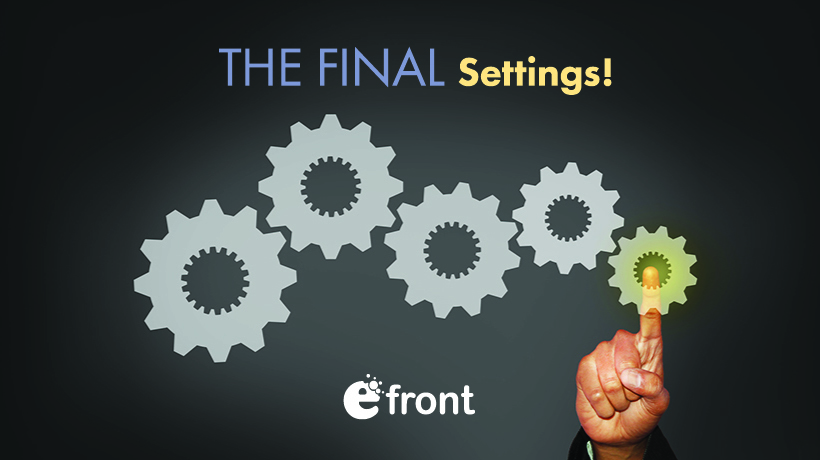Using A Learning Management System To Support Multi-Tenancy
Multi-tenancy within a Learning Management System can mean different things to different people. In this article, multi-tenancy is considered the ability to support disparate organizations within the one LMS installation, with members of each organization enjoying a branded and customized experience with little or no interaction with one another.
What Functionality Should I Look For?
If you know you will need to deliver content to multiple tenants via the same LMS, there are several pieces of functionality to look for when you’re selecting your platform:
- Hierarchies and audiences.
This allows you to establish different levels with your tenant organizations. This means you can assign customized learning plans to different tenants, with different workflows to ensure everyone receives the access they need. - Reporting.
Ensure the platform you choose lets you create different reports for each tenant. This way, learning administrators and managers will have access only to their own learners’ performance and progress, and can only generate reports across their own userbase. - Navigation and design.
Each tenant will most likely require their own look and feel and navigation structure, so ensure the underlying learning management system allows you to do this. This can include making certain menu items available to some tenants and not others, creating customised dashboards for each tenant and applying different themes to each tenant’s area within the LMS, giving each tenant a unique user experience. - Learning items.
You will need to deliver learning items such as courses and certifications to the various learners across the tenant organizations. That’s why it’s important to ensure that each of the learning items can be delivered to the specific audiences in each tenant for custom learning experiences.
Multi-tenancy can be a complex, easily misunderstood concept. This scenario will help explain how multi-tenancy could work for your organization in practice.
A Multi-Tenancy Scenario: Veloci Petes, A Bike Retailer
Background Information
Veloci Petes specialize in designing, building and selling high-end mountain and road bikes. With a rapidly growing team and customer base, their training and development needs have steered them towards a Learning Management System.
The company is divided into three distinct areas, each supporting their own training departments. The Mountain and Road Bike Training teams are responsible for creating and managing their own specialised learning materials, with the Central Office HR department geared up to provide cross-company compliance based training.
Administration Toolkit
Veloci Petes is using a single instance of its chosen Learning Management System to support their training by reproducing their company framework within the organizational hierarchy system.
Administrators have created a dynamic audience (where audiences change based on a range of criteria, such as course completion or obtaining a specific certification) for each division of the company and assigned each group the relevant learning plan templates, competencies, company goals, and appraisal forms.
From time to time, staff assignments cycle between teams, so dynamic audiences allows group membership to be automatically updated when an individual’s circumstances change. For example, in July, road bike sales inflate and mechanics and fabricators from the Mountain Bike Workshop team switch teams to lend a hand.
Navigation And Custom Design
Veloci Petes has its own custom branded designs for each division of the organization. These themes work in tandem with the overarching company branding and have been assigned at the user level. This means every team member sees the corresponding design as soon as they’ve logged into the LMS.
Each team also has its own unique main menu navigation to highlight group-specific resources and links, and a unique dashboard - all assigned by audience.
Division dashboards include different blocks, content, images, and links specific to each team.
Getting Up To Speed
Programs, certifications, and courses have been set to use audience-based visibility, so staff only see learning content relevant to them within the course catalog.
To ensure each team can be assigned the right learning at the right time, Veloci Petes uses the audiences functionality to enrol staff into the corresponding programs, certifications and courses for their department. These learning items are pumped directly into each staff member’s Record of Learning.
Saddled With Responsibility
Members of each of Veloci Petes’ Training teams have been assigned Course Creator rights within corresponding categories.
Course Creators can create any number of sub-categories and courses within their own nominated categories. They can then populate these courses with content and activities, manage the enrollment of learners, and assign trainers to manage the course.
With the Central Office HR Team managing their own dedicated category, Mountain Bike and Road Bike staff (including training staff), can be enrolled in mandatory and other compliance courses as learners.
By not providing any other training team Course Creator rights in the Central Office categories, the HR team can ensure only they are able to manage and update these courses.
Reporting
With the company’s LMS configured to filter users by organization, administrators can create custom reports tailored and accessible to the training team of each organization, or hybrid reports capturing learning across the entire organization.
These reports can include all enrolments and completions of any course, programs and certifications within the site to check everyone is on track.
Ready To Get Started?
In order to break down the work required into manageable sections, document what each audience need from their LMS and how defined do you need each audience - this will help you with the initial setup. Whiteboarding a series of user journeys can also help you and your configuration team with understanding the required system settings.
A few points to remember:
- Garbage in - garbage out: In order for any automated processes to work effectively and your LMS site to assign users the right learning and at the right time, user information needs to be timely and accurate.
- Before going live with your solution, test with a small group of demo users.
- Remember to document your setup. Supporting multiple learner groups within a single site requires ongoing maintenance - knowing how to make these updates without affecting existing users is essential.








